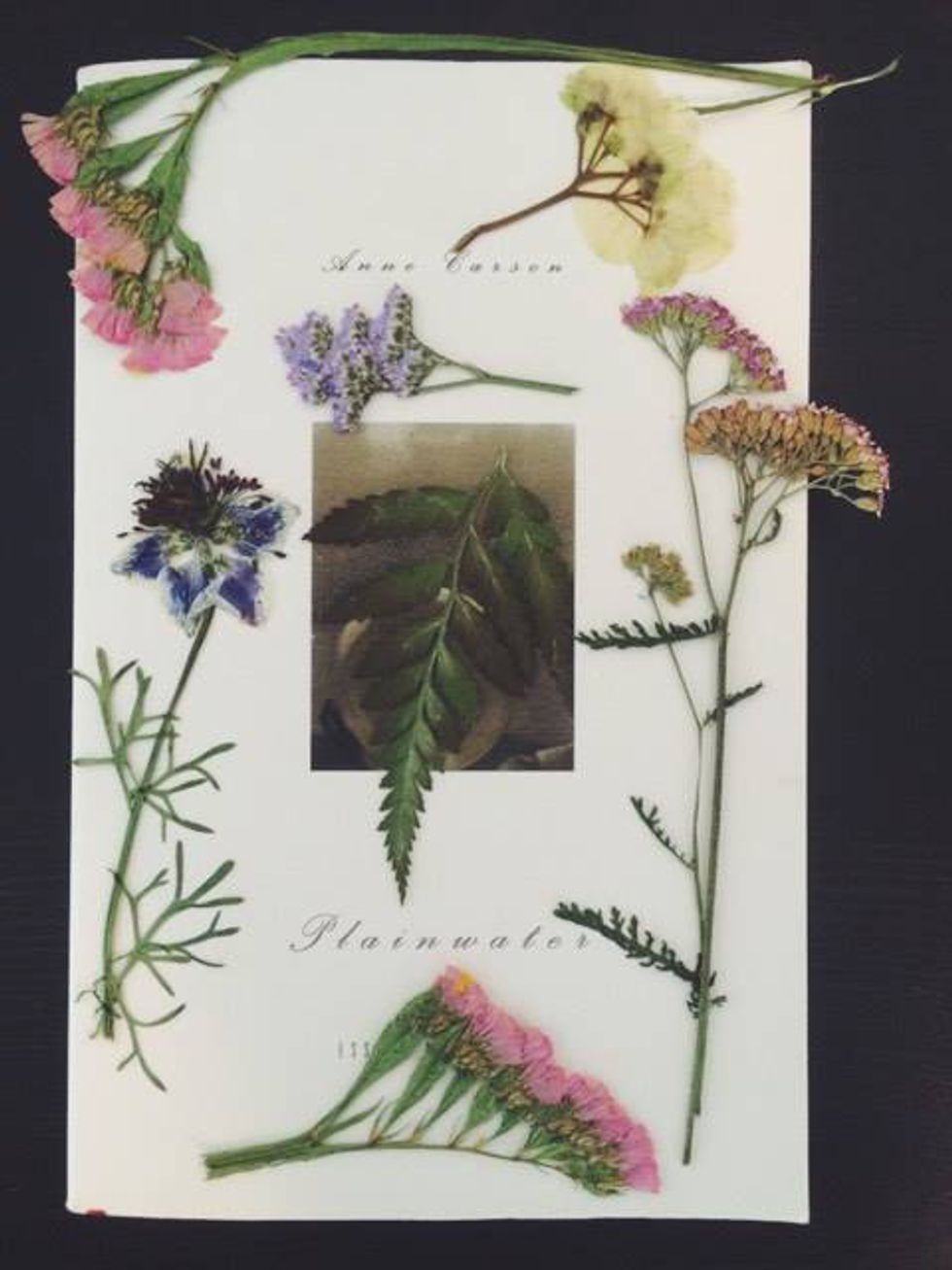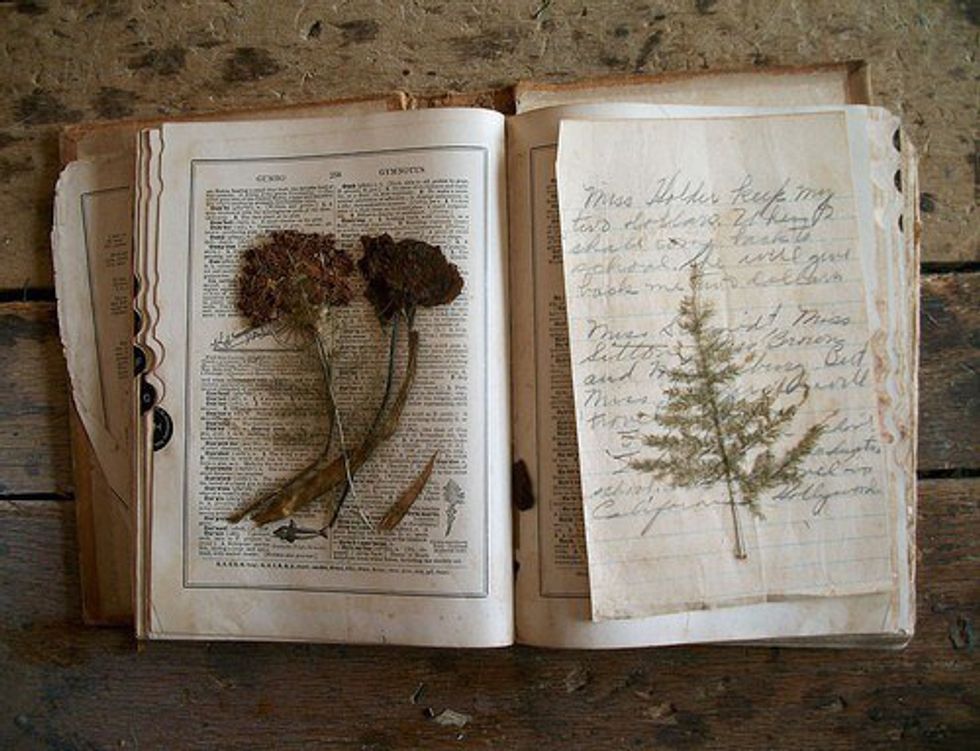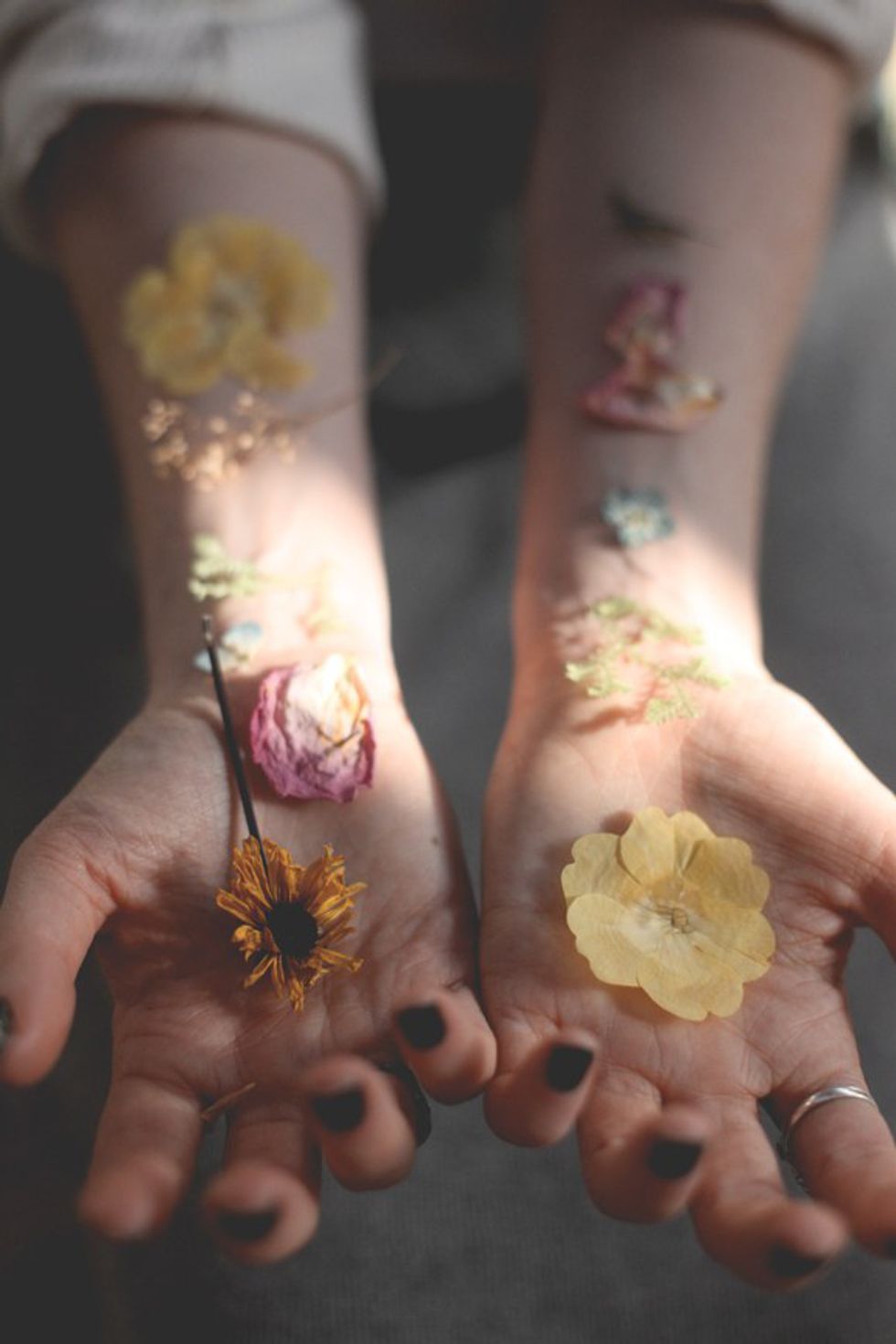Flower Pressing is the art of preserving flowers by drying and flattening them, typically using books. From Ancient Egypt to the prehistorical Arabia, to Elizabethan England, flower preservation has been used to capture fauna in it full vivacity for thousands of years.
There are many ways to preserve flowers, including hanging, freeze drying, and more recent microwave flower pressing, but the method I use is book pressing. So without further ado, here is a simple guide you can use to press flowers using only books, tissue, and the flowers you want to preserve:
1. Go Flower Hunting. Pick a warm, clear afternoon with enough time allowed for the morning dew to dry. For the best results, bring materials needed for pressing (a book and tissue) with you on your flower hunt, so you can press the flowers at their freshest.
2. Choose the Right Flowers. Not all flowers are suited for book pressing. The best flowers to look for are thin enough to be laid in between the pages of a book. In my experience, the best flowers for pressing are daisies, violets, and many different types of wildflowers like Queen Anne's lace and Baby's Breath. Keep in mind you can also press leaves, ferns, and herbs!
3. Press the Flowers. Open your book (using a heavy book like a phone book or an encyclopedia is preferential, but by no means required). Arrange tissue on an open page in your book—using tissue helps protect the pages from staining and aids in wicking away moisture. Place your desired flower neatly on the tissue, making sure the petals are arranged in the way you want them preserved. If you're using the same book for multiple pressings, make sure there are about 1/8 inches of pages between each pressing.
4. Weight and Wait. When you return from your flower hunt, place other heavy items on top of the book with your pressings and do not disturb this arrangement for at least 5 days; however, depending on the humidity or size of the flower, it may take longer. If you are worried about adhering to the right timeline, wait two weeks before checking on your pressed flowers.
5. Save or Display. When your pressings are complete, you can continue to store them in the book, or you can carefully place them in an airtight plastic bag and keep it out of the sun. Alternatively, you can make art out of your pressings, which make as great decoration or gifts. You can make bookmarks, string your flowers to make garlands, or display your flowers in photo frames.
Pressing flowers can be a fascinating creative outlet that allows you to explore the delicacy and vigor of a living thing. Good luck and have fun!












































